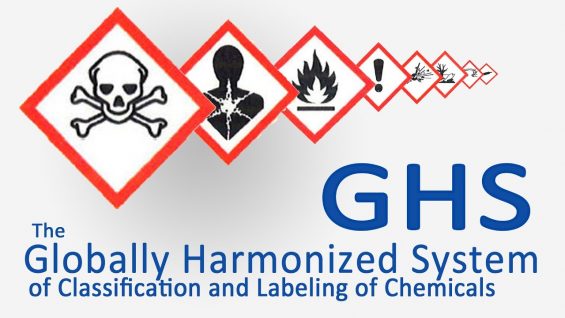Preparation for HazCom Update – GHS Revision 7

Although the United Nations publishes updates to the Globally Harmonized System of Classification and Labeling of Chemicals every two years, the most recent edition – Revision 7 – is of particular significance given that OSHA has expressed its intent to update its 2012 Hazard Communication Standard (currently aligned with GHS Revision 3) with this latest edition of the system. The agency plans to publish a notice of proposed rulemaking in February that will detail changes to the HazCom Standard to align with Revision 7.
It’s important to remember that GHS-adopting entities have the flexibility to choose which elements of the system to adopt based on what works best within their particular regulatory frameworks. This flexible approach is a primary tenet of GHS and aims to facilitate greater global system adoption. Therefore, OSHA may elect not to adopt all parts of Revision 7 and, conversely, may choose to include provisions that aren’t currently included.
Potential changes that an alignment with Revision 7 could bring include:
- Clarified definitions of some health hazard classes
- Revised criteria for categorization of flammable gases within Category 1
- Revised precautionary statements in Annex 3
Other changes baked into Revision 7 from updates published in GHS Revisions 4, 5 and 6 – the editions the UN has published since OSHA revised the HazCom Standard in 2012 – that the agency may also elect to incorporate in this round of modifications include:
- New hazard categories for chemically unstable gases and nonflammable aerosols (Revision 4)
- Further clarification of criteria to avoid differences in the interpretation of precautionary statements (Revision 4)
- Clarification of hazard classification criteria for skin corrosion/irritation, severe eye damage/irritation, and aerosols (Revision 5)
- Addition of a new test method for oxidizing solids (Revision 5)
- Revised/simplified classification and labeling summary tables (Revision 5)
- New codification system for hazard pictograms (Revision 5)
- New hazard class for desensitized explosives (Revision 6)
- New hazard category for pyrophoric gases (Revision 6)
- Provisions intended to clarify the criteria for the hazard classes of explosives, specific target organ toxicity following single exposure, aspiration hazard and hazardous to the aquatic environment (Revision 6)
- Additional information to be included in Section 9 of Safety Data Sheets (Revision 6)
- Revised and further rationalized precautionary statements (Revisions 4, 5 and 6)
So, what does this mean for HazCom-covered businesses? Although stakeholders should be aware of OSHA’s Revision 7 alignment plans, it remains critical that covered businesses continue to adhere to the current HazCom 2012 (Revision 3-aligned) requirements and not make any presumptive changes about to how to reclassify hazardous chemicals or modify their SDSs and labels. HazCom 2012 will remain the law until OSHA communicates differently.
Instead, chemical manufacturers, importers, distributors and employers (end users) should be actively working to ensure they’re fully compliant with the current SDS, label, training and written plan requirements of HazCom 2012, which will help ease the transition when new changes from Revision 7 are introduced. The following is a quick checklist of some of these hazcom compliance considerations:
- Proper chemical hazard classifications
- Use of 16-section, GHS-aligned HazCom 2012 SDSs
- Up-to-date workplace- and inventory-specific SDS library
- Employee right-to-know access to inventory of SDSs
- Accurate and current chemical inventory list
- Compliant manufacturer shipped labels and employer workplace labels
- Completed employee training on HazCom 2012, SDSs, labels, all chemical hazards present in the work environment and the workplace-specific written HazCom plan
- Site-specific OSHA hazcom written plan made accessible to employees
- Functional infrastructure (systems, tools, equipment, etc.) and processes for meeting HazCom compliance obligations
HazCom-covered businesses should identify gaps in compliance now so they can seek out additional help ahead of the next transition. Revision 7 changes will be here before you know it.
This article, written by Phil N. Molé, MPH and EHS and sustainability expert, was originally posted here.
